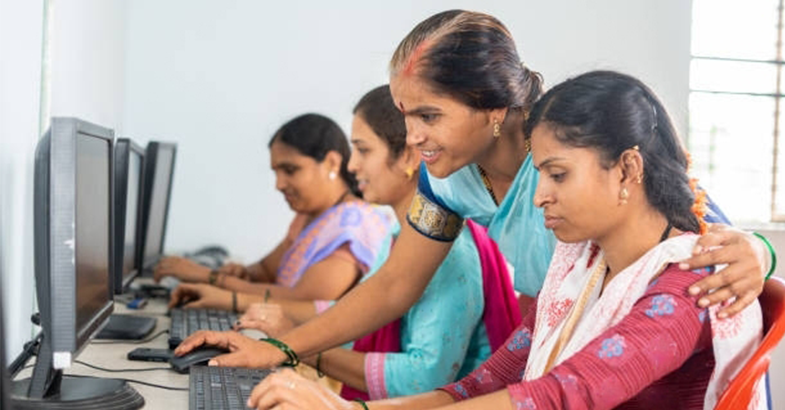
Recently, a video clip of a 60-year-old woman wearing a sari diving into Tamil Nadu’s Thamirabarani River went viral on social media. The video garnered many likes while being praised for challenging gender socio-cultural norms. In general, social, religious, and cultural reasons in South Asia inhibit women’s mobility putting them at greater risk of injury and increased mortality rates during climate disasters. Sample this: During the 1991 cyclone in Bangladesh, 91 per cent female mortality rate was reported due to mobility restraint caused by their saris. Likewise, in the recent 2022 devastating floods in Pakistan, women were forced to stay in flooded villages as a matter of honour. The irony is that even today, the patriarchal mindset and structural social inequalities undermine women’s and girls’ capabilities and restrain them from pursuing their interests.
Inequality and Technology Design
Class and gender asymmetry in vulnerability to disaster risk is rooted primarily in local communities’ socio-cultural norms and power imbalances. For instance, in many cases, women, physically challenged persons, and minorities do not receive timely hazard warnings and are the hardest hit by the impacts.
While digital technologies offer a huge potential to contribute toward building women’s resilience in climate disasters, understanding the ground reality about who has and doesn’t have access to these technologies is crucial, Gender Divide report, ranks the lowest out of the 120 countries in two categories – the gender gap in internet and mobile phone access. The gender gap in internet access in Pakistan stands at 65%, whereas the gender divide in mobile phone access stands at 51%.
Climate Adaptation and Resilience for South Asia project (CARE), supported by the World Bank, findings of an assessment of Climate Smart Agriculture (CSA) policies and practices in Pakistan reveal that women farmers and marginalised groups such as sharecroppers, wage earners, and landless farmers in provinces of Balochistan, Punjab, and Sindh still do not have access to timely weather information. Multi-hazard Early Warning Systems (MHEWS) primarily rely on traditional knowledge and methods. Most of these farmers have yet to start using mobile phones for agricultural and weather-related information due to access, affordability, illiteracy, and limited training in digital applications.
It was also evident in the findings that access to information and knowledge of the advantages of CSA practices are necessary for the adoption of CSA technology and practices. The availability of CSA and its uses are not sufficiently understood by a sizable number of women in farming communities. For instance, inadequate and exclusive extension mechanisms at the local level prevent women farmers from accessing contemporary farming information, technology, and credit.
Usually, the technology design, demonstration, and adoption strategy decisions need to be more inclusive. Rural women and marginalised people often are not included in planning, designing, developing, and demonstrating processes. There is also a limited connection between women farmers and extension workers and trainers due to fewer women extension staff at the field level.
Though Early Warnings for All Executive Action Plan 2023-2027, the UN Global Early Warning Initiative for the Implementation of Climate Adaptation provides a framework to integrate a gender perspective in technological evolution, gender-based asymmetries in all spheres of involvement with innovation and technology are common. These limit women’s and young girls’ ability to reap the considerable resilience gains offered by the technologies to mitigate the impacts of, prepare for, respond to, and recover from climate disasters.
People of different classes, ethnicity, and gender may have different levels of access to formal and informal dissemination channels and have other communication preferences in accessing early warning information. For example, young girls and women often do not receive hazard warnings because their behaviour patterns or information preferences need to be taken into account or because they are not targeted directly due to assumptions of equal access to public space.
Digital Innovation and Early Warning Systems
Digital technology has the potential to contribute to four components of MHEWS directly -1) Risk knowledge, (2) monitoring and warning, (3) warning dissemination and communication, and (4) community response capability. Access to digital technology can also contribute to evaluating and collecting data on the impact and situations of different classes and categories of people’s risks, interests, and needs through more accessible data collection and dissemination.
However, it is more effective and instrumental in building climate resilience only if these innovations are inclusive with special inclusive policy provisions such as targeted subsidies, tax exemptions, and post-demo and training services. Such conditions could increase the technology adoption rate and provide more opportunities at the community level.
“Need to carry out nationwide campaigns regarding the rights of female agricultural workers and marginalized groups, through media and outreach programs to make them aware of their rights on land ownership, access to CSA technology, and available CBOs and networks that work towards women’s empowerment and gender equality”. _- Stakeholder consultations
A growing body of research has shown that access to digital technology and its efficient use has proven successful, especially during COVID-19. It has provided safety and coping mechanisms for women and girls, especially against gender-based violence during disasters. Undoubtedly it is critical to ensure that climate disaster adaption and resilience policies, plans, and strategies are designed, developed, and deployed in an inclusive way that contributes towards youth and women’s empowerment and safety in pre and post-climate emergencies. Fragment and incremental progress in reducing the gender digital divide are there, but It’s time to shift gears. We must act now and at scale for gender-inclusive Digital solutions for all.
Policy prescriptions
Based on the findings of the assessment and analysis of climate change, DRR, and agriculture policies, the following actionable recommendations are suggested to support the inclusion of gender considerations in the design and service delivery.
1) Amendments to agriculture policies must be supported by the outcomes of gender analysis.
2) The updated policies, plans, and strategies need to have specific provisions aimed at protecting and promoting the livelihoods of the women farmers including specific measures for a potential pandemic such as COVID.
3) Promote and invest in providing technical training to women farmers on DRR and CSA to improve their knowledge and skills to adopt modern technology, and crop diversification and insurance, early warning systems, especially at provincial levels.
5) Policy provisions should be ensured for women farmers and marginalized groups to meaningfully engage in sustainable farming by providing CSA technology such as solar water pumping systems and micro-irrigation to help reduce their workloads and improve yields.
“Punjab Agriculture Policy (2018), Sindh Agriculture Policy (2018), and Balochistan Agriculture Sector Policy and Strategy (2014) need to be amended to integrate gender-sensitive provision measures for climate change adaptation.” _- Stakeholder consultations

About the author: Bhawana Upadhyay has extensive experience in gender and social development issues and currently serves as Senior Gender and Inclusion Specialist at ADPC. Bhawana has served three Consultative Group on International Agricultural Research (CGIAR) centres, The Center for People and Forests (RECOFTC) and Oxfam GB, primarily leading and coordinating gender and inclusion themes focused on research-for-development as well as program management. Climate change, agriculture, disasters, public policy, and human rights are among of her areas of interest, and Bhawana has several internationally peer-reviewed publications covering these areas.
DISCLAIMER : The views expressed in this blog/article are author’s personal.

